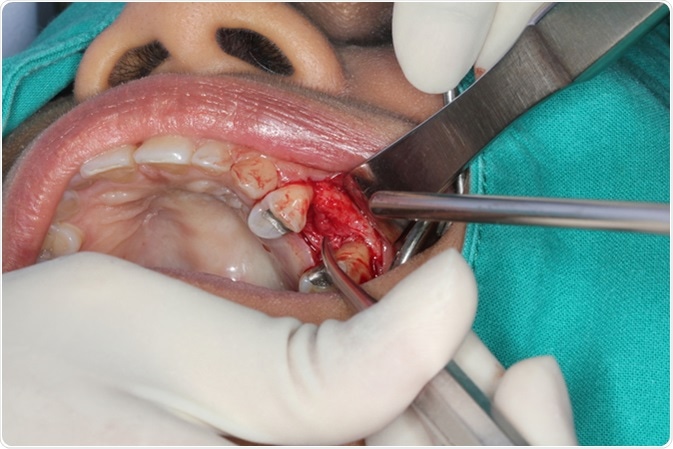Site Under Development, Content Population and SEO, Soft Launch 1st January 2020
Gum surgery is also known as periodontal surgery. This surgery improves the prognosis of unhealthy gums and teeth and improves the overall aesthetics.

A healthy gum or gingiva remains intact to the tooth structure and does not allow any food particles to settle in between. Factors such as improper cleaning or certain health conditions can lead to gingivitis, which is an inflammatory disease of the gums. As a result, food particles start to settle and slowly form a hard layer known as tartar in between the gums and teeth.
If gingivitis is left untreated, this condition flares and results in periodontitis. Periodontitis is an exaggerated form of gingivitis which can severely damage the structures supporting the tooth.
Gingivitis and periodontitis result in a gap in between the tooth and gum structure leading to a pocket formation. One of the objectives of gum surgery is to eliminate these deep pockets. Gum surgery also aims to improve dental aesthetics in some patients.
Surgery to eliminate pocket
Gum surgery which is used to eliminate the pocket is known as pocket reduction surgery. There are a number of surgical procedures used to achieve pocket reduction.
Gingivectomy
This procedure removes the gingiva. When the gingiva is excised, it permits the visibility and access necessary to allow the tartar removal and a complete smoothing of the roots. This procedure promotes the gingival healing and repositions the gum to its original contour. Gingivectomy can be performed by scalpels, electrodes, laser beams or chemicals.
Laser Gingivectomy
Lasers most commonly used in dentistry are carbon dioxide and neodymium: yttrium aluminum garnet (Nd:YAG) lasers. Laser beams are used to excise the gingiva.
Gingivectomy by electrosurgery
Gingivectomy is performed with the help of needle electrodes. However, the use of electrosurgery is not widely recommended as the heat generated can pose damage to the tissue supporting the teeth.
Gingivectomy using chemicals
Gingivectomy is performed using certain chemicals such as potassium hydroxide; however this is not a very popular mode of gingivectomy due to a number of disadvantages.
Flap Surgery
This procedure is done primarily in case of deep pockets which are more than 5 mm in depth. The gums are excised and a flap is raised; this allows visibility and the dentist can remove the tartar. Often, the damaged bone is also reshaped during this process. The flap is then closed by suturing. This form of surgery treats deep pockets effectively.
Gingival graft surgery or guided tissue regeneration
This type of surgery is done primarily in cases of gingival recession, where gums leave their original contour and recede from the gum line. This exposes the roots of the teeth. Different methods of gingival graft are:
Gingivoplasty
This surgical procedure is just like a gingivectomy, however, its main aim is not to treat the pockets but to reshape the gingiva and bring it back to the original position in case of gingival recession.
Frenectomy and Frenotomy
Frenum is a short tissue which joins the gums with the interior portion of the lips. In case of a poorly placed frenum, it can displace the gums from their natural position, hence it can lead to the gum recession. A complete or partial removal of the frenum is carried out depending on the situation.
Crown lengthening surgery
This type of surgery is performed to treat gummy smiles and helps to in restoring the decay or damage which occurs under the gum line.
Osseous Recontouring Surgery
This surgery is primarily done to contour the edges of the bone.
Alveoloplasty
This is mainly done in patients who require prosthesis or dentures. Sharp edges are smoothed for a better fit.
Minor gum surgeries can be performed by a general dentist, but complex surgeries are done by a periodontist, who is specialized in treating periodontal cases.
Gum surgery is not a permanent remedy in treating the gum diseases, the chances of relapse of periodontal disease is always there. Post surgery maintenance can minimize the chances of relapse. Maintaining a good oral hygiene and a regular follow-up dental visit can replenish the dental health post surgery.